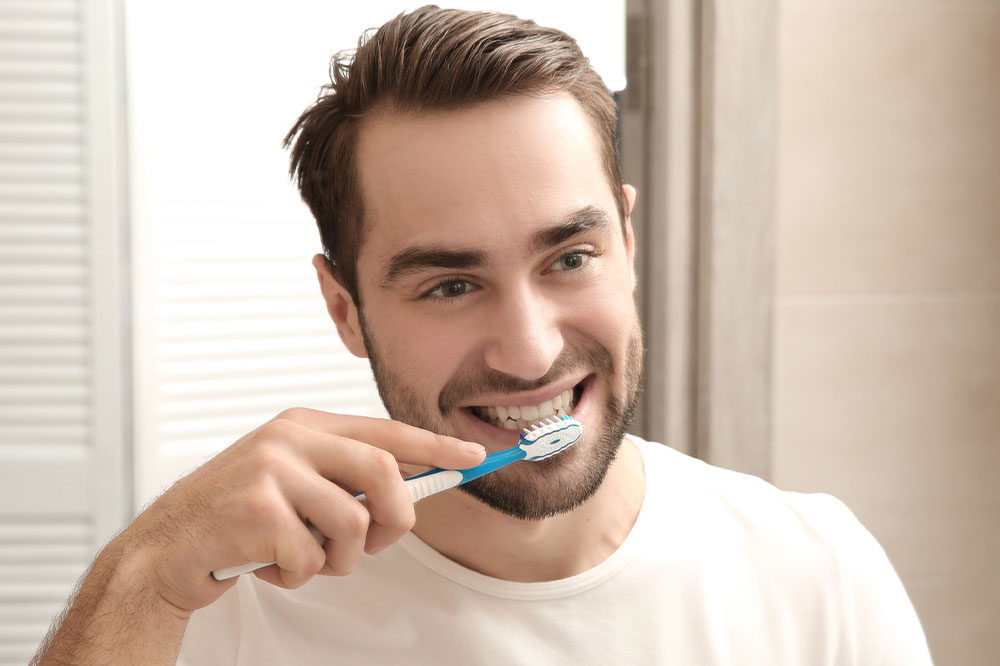10 easy ways to clean stained teeth

Several people experience changes in the color of their teeth over time. While these alterations can be subtle, they can occur over a gradual period, slowly damaging the teeth. These changes can be noticed in the form of yellow or discolored teeth, which may turn darker with age. Although at first, this may seem harmless, one must not ignore it. Keep reading to learn about ten simple ways to clean stained teeth.
Brush regularly and use a mouthwash
One must brush their teeth at least two times a day, and especially after consuming foods and beverages that can turn the teeth yellow, such as tea, coffee, soy sauce, balsamic vinegar, and tomato-based sauces.
However, one must remember that brushing the teeth immediately after consuming acidic foods may do more harm than good. Doing so can take away tooth enamel, making the yellow color increasingly visible. Furthermore, to ensure one achieves a pearly smile, one can try whitening mouthwashes. These products contain incredibly low concentrations of chemicals like potassium pyrophosphate and sodium citrate that work by bleaching teeth and removing stains.
Apply hydrogen peroxide and baking soda paste
Most whitening gels contain peroxide-based agents that bleach the teeth. So, one can blend baking soda and hydrogen peroxide to create a paste and use it to get rid of plaque and bacteria buildup on the teeth. All one has to do is blend 1 tablespoon of baking soda with double the amount of hydrogen peroxide until one reaches a paste-like consistency. Then, apply it on the teeth and wash it away after 2 minutes. This can be done daily to easily remove the stains.
Use apple cider vinegar
Carefully mix only two tablespoons of apple cider vinegar with at least six ounces of water. Then, swish the solution for 30 seconds, rinse the mouth with water, and brush the teeth. Although this is a simple way to clean stained teeth, one must be immensely careful while doing so. This is because, when not used right, apple cider vinegar can damage the hard surface of the teeth.
Try strawberry and baking soda
Some fruits such as strawberries and pineapples can help in removing teeth stains. But, one must keep in mind that some fruits must be consumed regularly to whiten the teeth, while others can be used in the form of a paste. For instance, one can smash a few fresh strawberries and blend them with baking soda until one reaches a paste-like consistency. Then, this DIY mix can be used while brushing the teeth to remove stains and enhance freshness.
Use whitening toothpaste
One of the safest ways to clean stained teeth is by using whitening toothpaste. While one cannot expect sudden changes to the teeth, gradual and regular use of the product can help get rid of the stains. Just like normal toothpaste, one must use it to brush their teeth two times every day for at least a month to notice the improvement. Additionally, one can utilize floss to clean the areas between the teeth and even the area behind them, which usually acts as a breeding ground for bacteria in the mouth.
Opt for activated charcoal
One can use activated charcoal powder or opt for a toothpaste containing it to help remove stains from the surface of their teeth. However, one must keep in mind that the product should be used in extremely low amounts. This is because it can make the surface of the teeth harder and if used regularly in excessive amounts, it can also lead to erosion of enamel, causing damage to the teeth.
Rub the teeth with fruit peel s
Some fruit peels, especially lemon, banana, and orange peels contain acidic properties that can help remove stains from the teeth by dissolving them. This way, one can get clean-looking and healthy teeth.
Apply tooth whitening strips
These thin, plastic strips are coated with carbamide peroxide gel. When applied properly, the gel will press against the tooth enamel and clean it. One can put it on for a few minutes, and then remove and rinse their mouth with warm water.
Try tooth whitening pens
An increasingly popular and convenient option is a tooth whitening pen. It contains bleaching agents that break down plaque buildup. The device looks like lipstick and has to be applied to the stained tooth.
Eat pineapples and papayas
Fruits like pineapples that have an irregular shape can act as an exfoliating agent to remove teeth stains. Furthermore, pineapples contain bromelain, an enzyme that has proven beneficial in removing stains from the teeth. Moreover, one can add papayas to their daily meals. The fruit contains the papain enzyme, which helps eliminate teeth stains.






